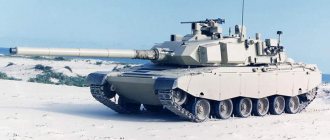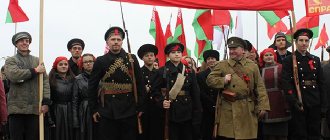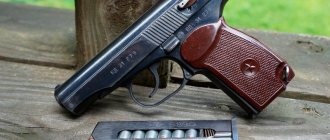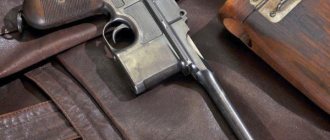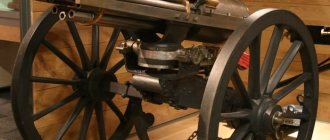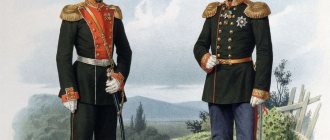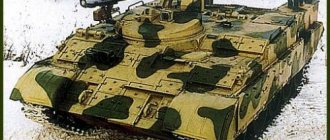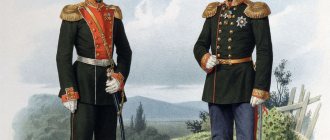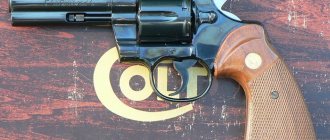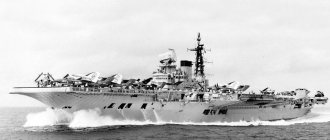History of origin
How did the Latvian army appear? The history of its creation dates back to the nineteenth year of the twentieth century. At that time, the components of the armed forces were four ground divisions, which in turn were divided into four more regiments. One third of them were occupied by artillerymen, the rest by infantry. The divisions had the following names: Kurzeme, Vidzeme, Latgale and Zemgale. In addition to the main personnel, the Latvian Army of 1940 received support from the Technical Division and the Navy. Almost at the beginning of the history of the creation of troops, Senior Lieutenant Alfred Walleiki organized an aviation group.
Armed associations began to be formed on a voluntary basis. The first semblance of the state army consisted of several rifle companies of soldiers - Latvian, German and Russian. But a year after the formation of the troops from among those interested, everyone began to be called up for service. The officers were headed by former Russian and German military personnel. The commanders also included representatives from the United Kingdom, the United States and Sweden.
In the first two years after its organization, the army fought against representatives of the Red Army. After this incident, the situation calmed down somewhat, and the armed forces were engaged in peaceful affairs. The pre-war army in Latvia did not use its defense capabilities against other countries for the next twenty years.
Notes
Footnotes
- Grand Duchess Birute (died ~1382) - wife of Grand Duke Kestutis and mother of Grand Duke Vytautas, has long been loved and revered by the Lithuanian people.
- Romualdas Tadas Giedraitis (1750−1824) - general of the Lithuanian Army, prince. He came from an old Lithuanian princely family. A professional military man, he was brought up in the cadet corps. Member of the Bar Confederation of 1768−1772, the Russian-Polish War of 1792, and the Kosciuszko Uprising of 1794. He finished the War of 1792 with the rank of major general. During the Napoleonic Wars he commanded a regiment of Lithuanian lancers. During the battle of Sierakow on February 13, 1813, he was captured by the Russians. He was in exile in Arkhangelsk. After 1815 he lived in Warsaw, where he died.
- Vaidotas, Prince of Lithuania, one of the sons of the Grand Duke of Lithuania Kestutis.
- In the Lithuanian language, units of the territorial army are literally called “combined” (lit. rinktinė, rinktinės).
- During the partisan war in Lithuania, a “district” (lit. Apygarda) was a unit of several partisan detachments. During the entire period of the partisan movement (1944−1953), there were up to 10 partisan districts in Lithuania. Many units of the Lithuanian Territorial Army are named after them.
- Dainava
(lit. Dainava) is the ancient Lithuanian name for the country of the Yatvingians. - Formed in 1992 as part of the then motorized airborne brigade “Iron Wolf”, in 1993 it became known as the “Pomeranian Battalion” (lit. Pamario batalionas). In 1995, it was withdrawn from the ground forces and included in the Lithuanian Navy as the 7th Dragoon Battalion for the Defense of Pomerania (lit. 7-is dragūnų Pamario gynybos batalionas). In 1999, he was withdrawn from the Navy and included in the Samogitia motorized infantry brigade. Due to the reorganization of the Lithuanian Army, this brigade was disbanded, and the dragoon battalion was transferred to the territorial army and became a training battalion.
- In accordance with the order of the Commander of the Lithuanian Army, the Volunteer Regional Defense Forces (Territorial Army) must, among other things, train specialists in cooperation with the civilian population.
- Jozas Vitkus-Kazimeraitis (1901-1946) - officer of the Lithuanian Army. He studied at a military school in Kaunas. In 1921 he was assigned to the active army. Participant in the War of Independence. In 1945, after the liberation of Lithuania, he organized the headquarters of the Nazi partisan movement in the south of Lithuania, and began to unite previously disparate partisan detachments for joint actions against the Red Army. Became the first leader of the southern district of the partisan movement of Lithuania. Killed in battle with an NKVD detachment on July 12, 1946
Sources
- en:Lithuanian Land Force
- . Delfi (September 15, 2008). Retrieved September 30, 2008.
- .
- ↑ The Military Balance 2016. - P. 116
- ↑ The Military Balance 2013. - P. 152.
- ↑
- (unavailable link). www.kam.lt. Retrieved June 30, 2016.
- International Institute for Strategic Studies.
The Military Balance 2016 / James Hackett. - London: Taylor&Francis, 2016. - P. 159. - ISBN ISBN 9781857438352. - ↑
- ↑
- . Retrieved April 21, 2013.
- (unavailable link). Retrieved February 12, 2010.
- (unavailable link). Retrieved February 12, 2010.
- (unavailable link). Retrieved February 12, 2010.
Soviet period
In 1940, the state became one of the Soviet Socialist Republics. Following this, the Latvian armed forces also underwent some changes. They increased the size of the Workers 'and Peasants' Red Army in the form of the Twenty-Fourth Latvian Rifle Corps.
Now military training for eighteen months was mandatory. After this period, the rank and file were added to the reserve. With the advent of Soviet power, the Latvian army (its strength) reached thirty-one thousand. Of this number, two thousand were officers, twenty-seven thousand were soldiers. The armed forces were also replenished with civilian employees. Their number was equal to a thousand people.
When the Great Patriotic War began, the republic was represented in the form of two rifle divisions and a separate anti-aircraft artillery division. Cadets from the Riga Infantry School also went to the front.
Independence time
Immediately after receiving the status of an independent state, the government signed a law that defined the concepts of “army of Latvia,” “numbers” and “arms of its personnel.” A people's voluntary defense organization was formed, which was called the National Guard. Protection of interests, independence and sovereignty has become one of the top priorities. Therefore, the authorities were actively involved in the formation of a combat-ready army.
In the nineties, the state actively began to establish international relations. As part of the partnership program with the United States of America, the country participated in all NATO projects.
What was also new was that the border troops became a separate unit after their withdrawal from the armed forces. The Latvian Army lost this link, which came under the control of the state Ministry of Internal Affairs.
According to customs service reports, more than eight million lats worth of weapons were transported across the border between 1995 and 2000. But there is one interesting fact - supplies to the state are only half of this amount. Although, according to documents on foreign economic transactions, various small arms were imported into Latvia.
Equipment and weapons
| Armored vehicles | |||||
| Type | Image | Production | Purpose | Quantity | Notes |
| IFV Vilkas | Germany/ Lithuania | Armored personnel carrier | 88 | In 2016, a contract was signed for the supply of 88 GTK Boxer armored personnel carriers | |
| M113A1 | USA | Armored personnel carrier | 234 4 | 49 M113A1 delivered from Germany in 2000, 18 of them for spare parts. Another 158 M113A1s were delivered from Germany between 2002 and 2006, of which 12 were for spare parts. | |
| MT-LB | Poland | Armored engineering vehicle | 10 | 10 MT-LB delivered from Poland in 2000 | |
| Artillery | |||||
| M101A1 | USA | 105 mm howitzer | 18 | 54 M101A1s were delivered from Denmark in 2002, of which over 18 were for spare parts. | |
| PzH 2000 | Germany | Self-propelled artillery unit | 21 | 21 units ordered | |
| PzMrs | USA | 120 mm self-propelled mortar | 40 | Panzermörser is a German modification of the M113, armed with a 120 mm Finnish Tampella mortar. 32 delivered from Germany between 2005 and 2006. | |
| 2B11 | Bulgaria | 120 mm mortar | 16 | 20 delivered from Bulgaria in 1999. | |
| M/41D | Sweden | 120 mm mortar | 9 | Licensed version of the Finnish mortar Tampella 120 Krh/40. 6 delivered from Sweden in 2002. | |
| M 1982 | Czechoslovakia | 120 mm mortar | no data | ||
| PM-43 | Poland | 120 mm mortar | no data | 18 delivered from the Czech Republic in 1995. | |
| M-60 | Bulgaria | 60 mm mortar | no data | ||
| M19 | USA | 60 mm mortar | no data | ||
| L.M. | Poland | 60 mm mortar | no data | ||
| Anti-tank weapons | |||||
| Pvpj 1110 | Sweden | 90 mm recoilless rifle | no data | ||
| HMMWV | USA | self-propelled ATGM | 10 | FGM-148 Javelin on M1025A2 HMMWV chassis | |
| FGM-148 Javelin | USA | portable ATGM | no data | 74 delivered from the USA in 2003. | |
| AT4 | Sweden | anti-tank grenade launcher 84 mm | no data | export version of the Swedish Pansarskott m/86 grenade launcher | |
| Granatgevär m/48 Carl Gustaf | Sweden | 84 mm anti-tank grenade launcher | no data | ||
| Air defense systems | |||||
| FIM-92 Stinger | USA | portable air defense system | no data | 54 FIM-92 Stinger delivered from the USA in 2007, some to the Air Force. | |
| Automotive technology | |||||
| L-ATV | USA | Armored car | 2 (Delivered as prototypes) + 198 | In total, it is planned to purchase about 200 L-ATV armored vehicles for the needs of the Lithuanian army, the delivery of which should begin in 2021. | |
| M1114 HMMWV | USA | wheeled all-terrain vehicle | no data | 40 M1114 delivered from the USA between 2004 and 2005. | |
| SISU E13TP | Finland | multi-purpose truck | 50 | received in 2007-2009 | |
| Unimog | Germany | multi-purpose truck | no data | ||
| Land Rover Defender | Great Britain | SUV | no data | ||
| Chevrolet M1008 | USA | SUV | no data | ||
| Weapon | |||||
| Heckler & Koch GMG | Germany | automatic grenade launcher | no data | ||
| Heckler & Koch AG36 | Germany | underbarrel grenade launcher | no data | ||
| GP-25 | USSR | underbarrel grenade launcher | no data | ||
| Browning M2 | USA | 12.7 mm machine gun | no data | ||
| Rheinmetall MG3 | Germany | 7.62 mm machine gun | no data | ||
| FN MAG | Belgium | 7.62 mm machine gun | no data | ||
| Ak 4 | Sweden | 7.62 mm automatic rifle | no data | Swedish version of the German Heckler & Koch G3 automatic rifle | |
| M14 | USA | 7.62 mm automatic rifle | no data | ||
| M16 | USA | 5.56 mm automatic rifle | no data | ||
| Heckler & Koch G36KA4 | Germany | 5.56 mm automatic rifle | no data | ||
| IMI UZI | Israel | 9 mm submachine gun | no data | ||
| Heckler & Koch MP5 | Germany | 9 mm submachine gun | no data | ||
| Barrett M82A1 | USA | 12.7 mm sniper rifle | no data | ||
| FR F2 | France | 7.62 mm sniper rifle | no data | ||
| GOL Sniper | Germany | 7.62 mm sniper rifle | no data | ||
| Heckler & Koch MSG-90A1 | Germany | 7.62 mm sniper rifle | no data | ||
| Sako TRG-22 | Finland | 7.62 mm sniper rifle | no data | ||
| M1911A1 | USA | 11.43 mm pistol | no data | ||
| Browning G.P. | Belgium | 9 mm pistol | no data | ||
| CZ 75 | Czechoslovakia | 9 mm pistol | no data | ||
| Glock 17 | Austria | 9 mm pistol | no data | ||
| Heckler & Koch USP | Germany | 9 mm pistol | no data |
Fighting
Although the Latvian army took part in hostilities, it was not particularly active. There were no direct aggressive threats from other countries, so the government sent its people to participate in a variety of missions.
The Latvian military took part in the formation of the ISAF forces, which were introduced into Afghanistan. The state provided its soldiers in 2003. The losses cost four Latvian citizens.
During the war on the territory of Iraq, the Latvian army was sent in the amount of 140 people to the territory of hostilities. Then the government sent more and more people. During the war in Iraq, about a thousand soldiers visited there. Three of them did not return home.
The Latvian army took part in many NATO formations. After the organization decided to introduce its contingent to stabilize the situation in Kosovo and Metohija, the Latvians decided to join them. For nine years, the government sent its citizens to carry out the mission. A total of four hundred and thirty-seven people fought in Kosovo.
Patch of service of military chaplains of the Latvian Armed Forces
Patch of service of military chaplains of the Latvian Armed Forces
The Christian symbol “Cross” is placed in the center of the sleeve emblem of the military chaplains of the Latvian Armed Forces.
The cross is a symbol that reminds us of God's wonderful love and forgiveness. At the base of the Cross is an open Bible with the letters of the Greek alphabet - first and last, alpha and omega. Below the Bible is flag , the edges of which protrude to the left and right. The cross and the Bible are placed in an oval symbolic sun with rays burning like tongues of flame and rising upward. At the bottom there is an inscription in Latin “Pro Deo Et Patria”, which translated means “For God and Motherland”. Cross and Bible This sleeve patch indicates that its owner is a priest and belongs to a traditional Christian denomination. credit : Viktors Kagans – Kovalovs
Surveillance systems
In order to better protect the sovereignty of its state, the government issued a decree on the construction of a station with a radar system. It was supposed to be located in the eastern part of the country. The purpose of the station was to monitor the airspace of other Baltic countries - Lithuania and Estonia, as well as parts of Russia and Belarus.
A year after the construction of the radar station, another surveillance facility was launched. Long-range radar began to operate in the Audrini volost. It is designed to control the Baltic countries.
NATO influence
Thanks to cooperation and support from the North Atlantic Alliance, the Latvian army is provided with fairly modern weapons. In 2005, the organization contributed to the supply of equipment of the appropriate level and power. This was done so that the state authorities, upon request, would provide their contingent to participate in international missions. And for this, the army must be well armed.
Thanks to established foreign economic relations, the country is supplied with:
- various types of small arms (pistols, machine guns, machine guns, grenade launchers, sniper rifles);
- vehicles (armored and unarmored);
- means of communication;
- uniforms (helmets, body armor);
- auxiliary equipment (trucks, tow trucks, ambulances).
Weapons and military equipment
Latvian soldiers during training in Poland.
| Type | Image | Production | Purpose | Quantity | Notes |
| Armored vehicles | |||||
| CVR(T) | UK UK | Combat reconnaissance vehicle | 123 | All machines will be modernized and undergo a major overhaul. Some of them will be equipped with Spike (ATGM). Variations are Scimitar, Sultan, Spartan, Samson and Samaritan. | |
| self-propelled guns | |||||
| M109A5Ö | USA USA | self-propelled guns | 47 | ||
| Armored cars | |||||
| HMMWV | USA USA | Wheeled all-terrain vehicle | 60 | ||
| Mercedes-Benz G-Class | Germany Germany | Wheeled all-terrain vehicle | 50 | ||
| Land Rover Snatch | UK UK | Wheeled all-terrain vehicle | 9 | ||
| All-terrain vehicles | |||||
| Mercedes-Benz G-Class | Germany Germany | Wheeled all-terrain vehicle | No data | MB 240GD 300GDN | |
| Bandvagn 206 | Sweden Sweden | Crawler all-terrain vehicle | ~180 | ||
| Polaris RZR | USA USA | Wheeled all-terrain vehicle | 62 | MRZR-2MRZR-4MV850 | |
| Volvo C class | Sweden Sweden | Wheeled all-terrain vehicle | No data | Volvo C303Volvo C304Volvo C306 | |
| Mercedes-Benz Unimog | Germany Germany | Wheeled all-terrain vehicle | No data | ||
| Trucks | |||||
| Scania P93 | Sweden Sweden | Truck | No data | Scania P93Scania NM154 | |
| Mercedes-Benz 1017 | Germany Germany | Truck | No data | ||
| Air defense systems | |||||
| RBS 70 | Sweden Sweden | portable anti-aircraft missile system | some amount | ||
| Anti-tank weapons | |||||
| Spike-LR | Israel Israel | anti-tank missile system | No data | ||
| Carl Gustaf | Sweden Sweden | anti-tank missile system | No data | ||
| AT4 | Sweden Sweden | hand-held anti-tank grenade launcher | No data | ||
| Pvpj 1110 | Sweden Sweden | recoilless rifle | No data | ||
| Mortars | |||||
| M252 | USA USA | mortar | 10 | ||
| M120 | USA USA | 120mm mortar | 25 | ||
| M/41D | Sweden Sweden | mortar | No data | ||
| 120-PM-43 | USSR USSR | mortar | No data | ||
| L16 | UK UK | 81 mm mortar | 28 | ||
| Weapon | |||||
| HK G36KV | Germany Germany | machine | No data | Since November 2006, it has entered the armed forces and police special forces (G36KV3) | |
| M16 | USA USA | automatic rifle | No data | Used as a ceremonial weapon only (M16A1) | |
| M14 | USA USA | automatic rifle | ~10 thousand | In 1997, 10 thousand M14s were received from the United States under the military assistance program. | |
| FN Minimi | Belgium Belgium | light machine gun | No data | Since November 2006 - standard light machine gun of the Latvian Army. | |
| MG-3 | Germany Germany | Single machine gun | No data | ||
| M2 | USA USA | Heavy machine gun | No data | Latvia uses the export version M2HB-QCB from the Belgian FN Herstal. | |
| Beretta 92 | Italy Italy | self-loading pistol | No data | ||
| Glock 17 | Austria Austria | self-loading pistol | No data |
Voluntary formation of the National Guard
The Latvian army has a rather interesting structure. In addition to the main troops, its strength also consists of volunteer territorial defense forces. They were formed in 1991 and received the name "Demessardze". This component of the state's armed forces is quite numerous. It has eighteen battalions to its name.
This formation receives support from the state, but it is voluntary due to the fact that there are only half a thousand professional military personnel in its units. The remaining ten and a half thousand people are people who joined the formation on their own initiative.
The Home Guard is the largest part of the Latvian armed forces. The chief commander says that people help the state by allocating personal time. But many volunteers have another main place of work. He believes that people are driven by ideology and love for the Motherland. This idea is supported by the rest of the Latvian army. The parade on the occasion of the twenty-fifth anniversary of the formation took place this year.
The tasks of the battalions are:
- liquidation of consequences of fires;
- rescue work;
- control of public order;
- security;
- protection of the land part of Latvia;
- participation in international missions.
Militant Baltic: what are the armies of Latvia, Lithuania and Estonia (PHOTO)
The history of the armed forces of the three Baltic republics, as well as the history of Latvia, Lithuania and Estonia, has much in common.
Period of independence between the two world wars, annexation to the USSR, German occupation, re-incorporation into the Soviet Union, declaration of independence in the early 1990s. All these small states have rather weak armed forces and prefer to rely on their NATO allies, reports TK Zvezda.
Latvia
The national armed forces of Latvia can be considered the heirs of the armed forces that existed before 1940 and included four land divisions, a technical division, a navy and various types of auxiliary units. After the inclusion of Latvia into the USSR, units of the Latvian army were transformed into the 24th Latvian Rifle Corps of the Red Army, which was operationally subordinate to the 27th Army.
In August 1991, a law was passed in Latvia on the creation of the first paramilitary force, the National Guard, and after Latvia declared independence, the government began creating the armed forces.
Since 1994, Latvia has actively participated in the NATO Partnership for Peace program. And in March 2004, the republic joined the North Atlantic Alliance. Latvian military personnel participated in various international missions in “hot spots” - in the peacekeeping contingent in Bosnia and Herzegovina, in the KFOR contingent (Kosovo), in the occupation of Afghanistan and Iraq.
In mid-2005, the concept of standard small arms was adopted in Latvia, which provided for the gradual rearmament of the Latvian army with NATO standard weapons. At the same time, first of all, the units participating in the missions of the North Atlantic Alliance, as well as units intended to participate in international operations, were to be equipped with new weapons.
In November 2006, the Latvian army received the first batch of HK G36 assault rifles. In January 2007, universal conscription was abolished and a transition to a professional army took place.
The Latvian armed forces number about 5 thousand military personnel and 10,000 reservists. Including more than 900 in the ground forces, 552 in the Navy, 250 in the Air Force. There are also more than 1,200 civilian employees in the armed forces. The 2012 military budget was 370 million euros.
The Latvian Ground Forces include the following units and units: ground forces infantry brigade, special forces unit, armed forces headquarters battalion, military police, territorial defense forces, logistics department, training department.
In 2015, several CVRT tracked armored personnel carriers were delivered to Latvia, designed to improve the combat effectiveness and mobility of the ground forces infantry brigade. By 2022, the Latvian military should receive 123 of these tracked armored personnel carriers purchased from Great Britain.
The Latvian army is also armed with American army all-terrain vehicles Humvee, which have high maneuverability and are suitable for air transport and landing.
Active negotiations are underway with Germany regarding the purchase of Panzerhaubitze 2000 self-propelled artillery mounts and infantry fighting vehicles. And in the summer of 2015, the commander of the Latvian armed forces told the press that his country would purchase Stinger man-portable anti-aircraft missile systems from the United States. It is expected that these MANPADS will be deployed at the largest military training ground in the Baltic countries - the Adazi military base.
The Latvian air force is small. In the early 2000s, two new Mi-8 MTV helicopters were purchased, equipped with rescue and search equipment, but also used for transporting personnel, evacuation and supporting special forces. Then two more Mi-8 MTVs were purchased. Previously, the Air Force was armed with the Polish training and sports aircraft PZL-104 Wilga, the Czechoslovak universal twin-engine aircraft Let L-410 Turbolet, the Soviet light multi-purpose aircraft An-2, and the Mi-2 helicopter.
It is not surprising that Latvia, which has a very modest air arsenal (as well as Lithuania and Estonia), is forced to use NATO, which alternately patrol the airspace of the Baltic republics. Since January 2016, this mission has been carried out by Belgian and Spanish military aircraft flying from a NATO military base in the Lithuanian city of Siauliai.
The Latvian naval forces number 587 military personnel and several ships, whose main task is demining territorial waters, as well as patrolling. The armed forces reserve consists of Latvian citizens who have completed military service (5,000 people). In the event of general mobilization, the army will receive 14 more light infantry battalions, one air defense battalion, one artillery battalion and several auxiliary units.
As of 2012, the strength of the Latvian State Border Guard was 2,500 people, armed with three helicopters, three patrol boats, 12 small patrol boats, 4 motor boats, 2 trucks, 4 buses, 11 off-road minibuses, 22 SUVs, 60 minibuses, 131 passenger cars, 30 ATVs, 17 motorcycles and 7 tractors.
Lithuania
Until 1940, the Lithuanian armed forces were called the Lithuanian Army. After the republic was included in the USSR, it was reorganized into the 29th Territorial Rifle Corps of the Red Army. In January 1992, the Ministry of Regional Protection began its activities. At the same time, the first call for active military service was announced. In November 1992, the re-establishment of the Army of the Republic of Lithuania was proclaimed.
Continuing the traditions of the Lithuanian Troops of the interwar period, many battalions of the modern Lithuanian Army were given the names of regiments of the 1920s and 1930s and their symbols. The modern armed forces of Lithuania consist of ground forces, navy, air force and special operations forces.
In September 2008, conscription for military service was abolished in Lithuania, and the Lithuanian armed forces are now recruited on a professional basis.
However, in 2015, conscription was “temporarily” restored - under the pretext of the “Russian threat” and the fact that many units were understaffed. At the same time, young people aged 19 to 26 years are called up, selected using a computer draw.
As of 2011, the military budget of Lithuania was 360 million US dollars (later it increased several times, approaching half a billion dollars), the total number of armed forces was 10,640 career military personnel, 6,700 reservists, another 14.6 thousand served in other paramilitary forces formations.
The ground forces consist of more than 8 thousand military personnel (a rapid reaction force brigade, 2 motorized infantry battalions, 2 mechanized battalions, an engineer battalion, a military police battalion, a training regiment and several territorial defense units).
There are 187 M113A1 armored personnel carriers in service; 10 BRDM-2; 133 105 mm field artillery guns; 61 120-mm mortars, up to 100 84-mm recoilless Carl Gustaf guns, 65 ATGMs, 18 anti-aircraft guns and 20 RBS-70 man-portable anti-aircraft missile systems, as well as over 400 anti-tank grenade launchers of various systems.
The Lithuanian Air Force has less than 1,000 personnel, two L-39ZA aircraft, five transport aircraft (two L-410 and three C-27J) and nine Mi-8 transport helicopters. More than 500 people serve in the Lithuanian Navy.
The naval forces are armed with one small anti-submarine ship "project 1124 M", three Danish patrol ships of the Fluvefisken class, one Norwegian patrol boat of the Storm class, three patrol boats of other types, two British-built Lindau minesweepers (M53 and M54), one Norwegian-built mine-sweeping force headquarters ship, one survey vessel and one tug. There is also a coast guard (540 personnel and three patrol boats).
Just like the other Baltic republics, Lithuania began cooperation with the North Atlantic Alliance under the Partnership for Peace program in 1994, which continued until it joined NATO in March 2004. Lithuanian military personnel took part in missions in Bosnia, Kosovo, Afghanistan and Iraq. After Lithuania joined NATO, the integration of the country's armed forces with the armed forces of other alliance countries began.
In particular, the Lithuanian motorized brigade “Iron Wolf” was included in the Danish division, and in 2007 an agreement was signed on the creation of an infantry battalion of NATO priority deployment forces by Estonia, Latvia and Lithuania.
In September 2015, NATO headquarters opened in Vilnius (similar ones were also opened in Estonia, Latvia, Bulgaria, Poland and Romania), which employs 40 military personnel from alliance member countries (primarily Germany, Canada and Poland). One of its main tasks is the coordination of the rapid reaction forces of the North Atlantic Alliance in the event of an international crisis in the region.
Estonia
The modern armed forces of Estonia (Estonian Defense Army) in peacetime number about 5.5 thousand people, of which about 2 thousand are conscripts. The reserve of the Armed Forces is about 30,000 people, which makes it possible to fully staff one infantry brigade, four separate battalions and organize four defensive areas.
Additionally, there are more than 12 thousand people who are members of the Defense Union (the so-called Kayt-Seliit, a volunteer paramilitary force).
The Estonian armed forces are recruited on the basis of universal conscription. Young men from 18 to 28 years of age who do not have an exemption and who are Estonian citizens are required to serve 8 months or 11 months of service (certain specialists).
The largest part of the armed forces is the ground forces. The priority for their development is the ability to participate in missions outside the national territory and carry out operations to protect the territory of Estonia, including in cooperation with allies.
Along with a number of Soviet-made armored vehicles, the Estonian army is armed with several dozen Swedish Strf 90 infantry fighting vehicles, Finnish armored personnel carriers Patria Pasi XA-180EST and Patria Pasi XA-188.
The main functions of the Estonian Navy are the protection of territorial waters and coastlines, ensuring the safety of maritime navigation, communications and maritime transport in territorial waters and cooperation with the NATO Navy.
Naval forces include patrol ships, minesweepers (Sandown class minesweepers), auxiliary ships and coast guard units. Separately, it is worth mentioning the voluntary military organization “Kaitseliit”, subordinate to the Ministry of Defense.
It consists of 15 territorial divisions, the areas of responsibility of which largely coincide with the boundaries of the Estonian counties. This organization takes part in the exercises of the Estonian army, in addition, its activists participate in maintaining public order as voluntary police assistants, take part in extinguishing forest fires and perform some other public functions.
Like the other Baltic states, Estonia is a member of the North Atlantic Alliance and has high hopes for its allies. Thus, in the spring of 2015, Estonian President Toomas Hendrik Ilves called for the deployment of NATO forces in the country on a permanent basis (at least a brigade).
And over the past year, the Estonian Air Force participated several times in joint exercises with the US Air Force: American attack aircraft flew in the Estonian sky and a training airborne landing was carried out.
A small Estonian contingent took part in the war in Afghanistan as part of the international ISAF force, as well as in the American occupation of Iraq. A small number of Estonian representatives took part in UN, EU and NATO peacekeeping missions in Lebanon, Mali, Kosovo and the Middle East.
Andrey Yashlavsky
Formation structure
The management bodies of this organization are based in three cities - Riga, Liepaja and Rezekne. Each has its own strategic importance:
- The district, located in Riga, is administered by the headquarters of the first command. He leads five battalions. One of them works for support, the others are infantry. The first provides the army with professional snipers, reconnaissance officers, doctors and signalmen.
- The district, located in Liepaja, is administered by the headquarters of the second command. It, like the Riga district, has four infantry battalions under its command. In addition to them, he controls an artillery battalion and a battalion that protects the territory of the state from weapons of mass destruction.
- The district, located in Rezekne, is controlled by the headquarters of the third command. He manages the infantry, air defense, engineering and student battalions. Students from different countries serve in the latter.
Organizational structure
The Latvian army, numbers and weapons (2015) is quite large for such a small country: 5,100 regular personnel and about 8,000 volunteers (as part of the people's militia). A distinctive feature of the state's armed forces is its simple chain of command. The entire defense system consists of the following units:
- ground troops;
- aviation;
- navy;
- National Guard;
- command centers.
In case of martial law, the authorities have the right to transfer all structures belonging to the Ministry of Internal Affairs to the control of the armed forces.
This includes border detachments and civilian defense units. Geographically, Latvia is divided into three districts. If previously military service was mandatory, then, starting from 2007, joining the army can only be done on a contract basis. The entire officer corps consists of former cadets of military lyceums.
Story
In the pre-war Republic of Latvia, the Senate existed as a court of cassation, divided into three departments: administrative, civil cassation and criminal cassation. In November 1940, the Senate was dissolved, and the Judicial Chamber was transformed into the Supreme Court of the LSSR.
In the Latvian SSR, the Supreme Court was mainly a court of cassation (second) instance, and in some cases - a court of first instance. Cases were considered by two panels - for criminal and civil cases, as well as (protests and complaints) by the presidium of the court and its plenum. The decisions of the plenum of the Supreme Court, which generalized judicial practice, were mandatory when interpreting the rules of law (the binding nature of plenum decisions was retained in the law for up to a year).
In 1995, the Supreme Court was divided into Chambers of Appeal (considering cases in which district courts were the first instance) and Cassation Departments (criminal and civil). In 2004, the Department of Administrative Affairs was also created. Since 2015, the Judicial Chamber for Criminal Cases has been liquidated, and since 2022 the Judicial Chamber for Civil Cases has been liquidated. This is how the transition to a “purely three-tier judicial system” took shape (first instance - district courts, appeal - district courts, cassation - Supreme Court).
Development prospects
The main goal in terms of the long-term development of the country's armed forces is to increase its defense capability in accordance with the requirements of the North Atlantic Alliance. They imply military construction, which should be completed by 2022. The army must be at such a level that it can strengthen its allies in international peacekeeping missions.
Thanks to this project, a single headquarters was formed in 2011, which organizes the work of its units and is responsible for cooperation with NATO formations. Its tasks are the development of strategic plans, coordination of actions, command of internal troops, and training of staff.
There are five thousand seven hundred people serving in the armed forces of Latvia.
Combat composition
| Type | Board number | Name | As part of the fleet | State | Notes |
| Mine ships | |||||
| Tripartite type minesweepers (English)Russian. | M04 | "Imanta" | in service | former HR.Ms. M854 Harlingen | |
| M05 | "Viesturs" | in service | former HR.Ms. M855 Scheveningen | ||
| M06 | "Talivaldis" | in service | former HR.Ms. M852 Dordrecht | ||
| M07 | "Visvaldis" | in service | former HR.Ms. M851 Delfzijl | ||
| Guard (patrol) ships | |||||
| Storm-class patrol boats | P01 | "Zibens" | in service | former KNM "Djerv" (P966) | |
| P02 | "Lode" | since June 11, 2001 | in service | former KNM "Hvass" (P972) | |
| P03 | "Linga" | since June 11, 2001 | in service | former KNM "Gnist" (P979) | |
| Skrunda-class patrol boats | P05 | "Skrunda" | since 2011 | in service | |
| P06 | "Cēsis" | since 2012 | in service | ||
| P07 | "Viesīte" | since 2012 | in service | ||
| P08 | "Jelgava" | since 2013 | in service | ||
| P09 | "Rezekne" | since 2014 | during testing | ||
| Command and support ships | |||||
| minelayer of the "Vidar" type (English)Russian. | A 53 | "Virsaitis" | since January 27, 2003 | in service | former HNoMS Vale (N53) (English)Russian |
| "Buyskes" type hydrographic vessel | A 90 | "Varonis" | since November 11, 2004 | in service | former HR.Ms. "Buyskes" (A904) |
| Goliat-class support vessel | A 18 | "Pērkons" | since 1993 | in service | |
| Coast Guard ships | |||||
| KBV type patrol boats | KA 01 | "Kristaps" | since 1993 | in service | former |
| KA 06 | "Gaisma" | since 1994 | in service | former | |
| KA 07 | "Ausma" | since 1994 | in service | former | |
| KA 08 | "Saule" | since 1994 | in service | former | |
| KA 09 | "Klints" | since 1994 | in service | former | |
| KA 14 | "Astra" | in service | former |
Air Force
Latvian military aviation can perform a range of tasks independently or accompany and cover ground forces or navy.
The Army's air force division consists of a squadron, an air defense battalion, and an air control squadron. The first component includes an aircraft and helicopter bureau and aircraft maintenance. The second component deals with hitting targets at close range. It includes three air defense batteries and a support platoon. The third component controls the communications link, security unit, and radar stations. It has at its disposal not only planes and helicopters, but also anti-aircraft guns.
In the future, it is planned to carry out a large-scale reconstruction of the airbase infrastructure and the purchase of extended-range radar systems.
Insignia
Generals and officers
| Categories | Generals | Senior officers | Junior officers | Cadets | ||||||
| Lithuanian rank | Generalos leitenantas | Generalolas majoras | Brigados generalas | Pulkininkas | Pulkininkas leitenantas | Majoras | Kapitonas | Vyresnysis leitenantas | lietenantas | Kariūnas |
| Russian compliance | Lieutenant General | Major General | No | Colonel | Lieutenant colonel | Major | Captain | Senior Lieutenant | Lieutenant | Cadet |
Specialists
| Categories | Petty Officers Specialists | ||
| Lithuanian rank | Štabo seržantas specialistas | Vyresnysis seržantas specialistas | Seržantas specialistas |
| Compliant | Štabo seržantas | Vyresnysis seržantas | Seržantas |
| Russian compliance | No | Staff Sergeant | Sergeant |
Sergeants and soldiers
| Categories | Sergeants | Soldiers | |||||||
| Lithuanian rank | Seržantas majoras | Viršila | Štabo seržantas | Vyresnysis seržantas | Seržantas | Grandinis | Vyresnysis eilinis | Eilinis | Jaunesnysis eilinis |
| Russian compliance | Senior Warrant Officer | Ensign | No | Sergeant Major | Staff Sergeant | Sergeant | Lance Sergeant | Corporal | Private |
Read with this
- Lithuanian Armed Forces
- 82nd Airborne Division
- Army "Norway"
- US Marine Corps
- Polish Navy
- Russian Marine Corps: history of origin, Soviet period, symbols and uniforms, main features
- Swedish ground forces
- SSO - US special operations forces
- us army
- Leibstandarte SS "Adolf Hitler"
